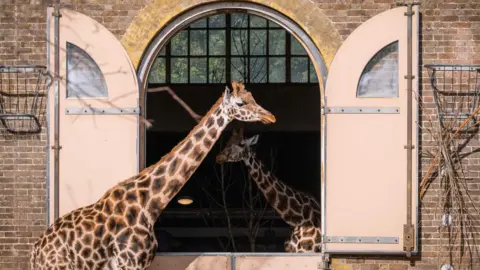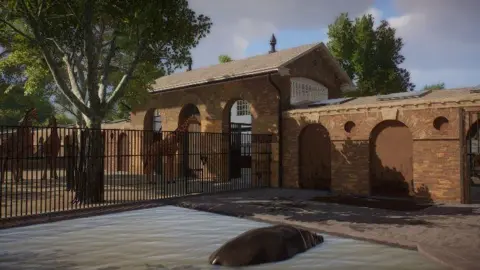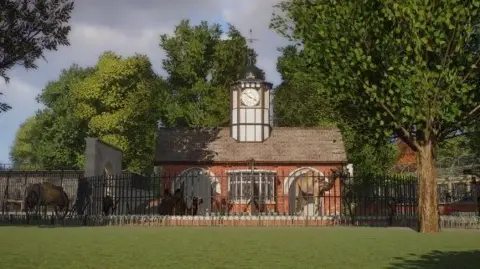Back in time with a recreation of London Zoo, 1904
 Ralph Stickley/ZSL
Ralph Stickley/ZSLA London Zoo employee has spent almost three years creating a digital recreation of the popular tourist destination as it was more than 120 years ago.
It allows virtual visitors to explore buildings and see the animals that were kept in the zoo in 1904, with "extraordinary" attention to detail on everything from the building materials used to the animal information signs.
The digital recreation was made for Planet Zoo, a simulation game where players can digitally construct and manage their own zoos and wildlife parks.
Designer and London Zoo engagement officer Ralph Stickley said he had the "spark of an idea" after reading the book London Zoo from Old Photographs by John Edwards.
 Ralph Stickley/ZSL
Ralph Stickley/ZSLInspiration struck Mr Stickley when he was at home during the pandemic lockdown.
He added: "London Zoo is a really special place to work, with an incredible history, and the evolving landscape of the site in Regent's Park has long been a fascination of mine."
Mr Stickley said he chose to recreate London Zoo in 1904 "as it was the year before some really significant changes were made to the site by then-secretary, Sir Peter Chalmers Mitchell, so it gives a glimpse into a zoo that's quite unrecognisable today".
Most of the buildings recreated in Planet Zoo no longer exist.
However, regular zoo patrons might recognise what is now a tropical birdhouse, the Blackburn Pavilion, which was a ground-breaking reptile house in 1904, and the Clock Tower atop a building that once housed camels, but now serves as the zoo's first-aid post.
 Ralph Stickley/ZSL
Ralph Stickley/ZSLSir Peter Chalmers Mitchell joined ZSL (Zoological Society of London) - the conservation charity that runs the attraction - as secretary in 1903 and introduced new ideas to the world of animal care and zookeeping.
His approach involved huge changes to how animal habitats were planned and saw ZSL purchase land to open a second wildlife park, Whipsnade Zoo, in Dunstable, Bedfordshire.
Tina Campanella, the charity's bicentenary manager, said: "As ZSL gears up to celebrate its 200th anniversary in 2026, this remarkable glimpse into the history of London Zoo is a great way to see all we have achieved and how far we've come.
"Ralph's attention to detail is really quite astonishing, from the intricacies of the railings surrounding exhibits to the order in which the lions, tigers and leopards lived inside the big cat habitat, you can spend hours investigating every corner of London Zoo a century ago."
Listen to the best of BBC Radio London on Sounds and follow BBC London on Facebook, X and Instagram. Send your story ideas to [email protected]
